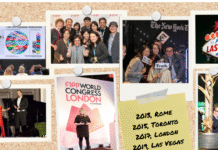Publishing an international author and launching a new genre in Hindi presents another level of complexity – “It’s like incorporating a new educational program into the workflow. I say ‘educational’ because editorial, marketing and sales operations follow much later. It has to be started from scratch.” – Aditi Maheshwari of Vani Prakashan
India is known for diversity in its culture, languages and beliefs, and so are its reading habits and publishing industry. Although there are more than 30 major languages in the country and general trade and textbooks in perhaps 50 languages, English and Hindi are perhaps the most widely spoken and read languages in the country. English because most social and physical science education books and journals are still published and distributed in English and Hindi because it has the largest population across seven North Indian states for whom it is the mother tongue. To some extent, the popularity of Hindi as a spoken language has also been helped by Bollywood movies and its role as a ‘national’ language.
We recently met Aditi Maheshwari executive director of Vani Prakashan to follow up on the Hindi publisher’s recent tie-up with HarperCollins India to collaborate on translations of fiction and non-fiction works in Hindi to English and vice versa. As HarperCollins India publisher Udayan Mitra said, a joint imprint is to be launched for translations of the best local and international titles including original works in Hindi.
Vani Prakashan has a staggering number of titles in its list – about 6,000. It prints and binds about 600 titles each year – a mix of reprints and 400 new titles each year. It translates work from international languages and over 20 Indian languages including Rajasthani, Urdu, Maithili, Bhojpuri, Bengali, and Tamil in its publishing program. In association with the Indian language program at the Centre for the Studies of Developing Societies and the Economic and Political Weekly, Vani Prakashan has produced two the EPW Reader in Hindi and a social science journal, Pratiman.
Maheshwari commented that the collaboration is a strategic move to give Hindi readers a much-needed diversity of global voices. What also came across in our brief discussion what that there are several challenges that Hindi publishers face and, “There is a need for consolidating some of the core competency in the publishing business, generally.”
Although Hindi publishing has embraced the technological advancements in composing, design and printing modules of book production introduced by desktop publishing more than 30 years, that have in fact made Indian languages and scripts more tractable for publishing, the current issues are those of translation and the transition to eBooks and digital media. Maheshwari says, that while the transition to producing digital media is done, “The challenge right now is to grow it and to make it profitable. We need to crack this.”
She cites some of the technology and training costs as prohibitive, “The amount we invest in the software and manpower to convert a book in ePub, it’s not breaking even. For Vani Prakashan, the eBook portfolio is more like a taster material – you have to be on a certain platform to be with the time, in the game so to speak – keeping up with the dynamics of the industry and its readership pattern. However, digital book sales are a meager 1.6% of our total sales at present.”
Vani’s books are available on six digital platforms right now. However, none of these have exclusive rights and the publishing retains the copyright and the cost of digital rights management software is also a challenge. The DRM access control technologies for restricting the use of proprietary hardware and copyrighted Hindi works is expensive, according to Maheshwari.
Translation is still a huge challenge. To translate a book into Hindi from another language sometimes requires numerous translators. Since there is no reliable digital proofreading tool available in Hindi, the task is more cumbersome for the translators, copy editors and proofreaders behind each book. Publishing an international author and launching a new genre in Hindi presents another level of complexity. Maheshwari says, “It’s like incorporating a new educational program into the workflow. I say ‘educational’ because editorial, marketing and sales operations follow much later. It has to be started from scratch.”
















